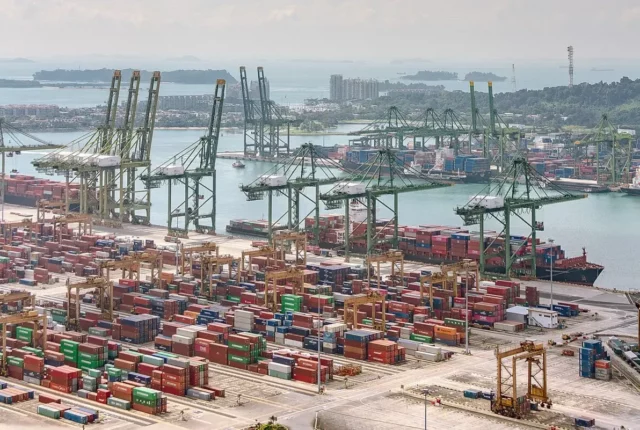
Supply Chain Optimization: Balancing Cost and Customer Satisfaction
In today’s highly competitive business landscape, supply chain optimization plays a critical role in driving operational efficiency and customer satisfaction. Achieving the delicate balance between minimizing costs and maximizing customer satisfaction is a constant challenge for businesses across industries. This article explores the strategies and best practices for supply chain optimisation, with a focus on striking the right equilibrium between cost and customer satisfaction.
Supply Chain Optimization: Balancing Cost and Customer Satisfaction
Efficient supply chain management is essential for businesses to thrive in a fast-paced global marketplace. The ultimate goal is to streamline processes, eliminate inefficiencies, and reduce costs while consistently meeting or exceeding customer expectations. Balancing cost and customer satisfaction requires a comprehensive approach that encompasses various aspects of the supply chain, from procurement and production to warehousing, transportation, and distribution.
The Importance of Supply Chain Optimization
Effective supply chain optimisation can yield numerous benefits for businesses, including improved profitability, enhanced customer loyalty, increased market share, and a competitive edge. By optimizing the supply chain, companies can minimize inventory carrying costs, reduce lead times, enhance order fulfillment accuracy, and deliver products to customers in a timely manner. This not only enhances customer satisfaction but also helps in reducing operational expenses and optimizing working capital.
Strategies for Supply Chain Optimization
To strike the right balance between cost and customer satisfaction, businesses can implement the following strategies:
- Demand Forecasting and Planning
Accurate demand forecasting is crucial for optimizing the supply chain. By leveraging historical data, market trends, and customer insights, businesses can predict demand patterns and plan their procurement and production activities accordingly. This helps in avoiding stockouts, reducing excess inventory, and improving overall operational efficiency.
- Supplier Relationship Management
Building strong relationships with suppliers is vital for optimizing the supply chain. Collaborating closely with suppliers, sharing demand forecasts, and implementing vendor-managed inventory programs can result in lower costs, shorter lead times, and improved product quality. Additionally, supplier partnerships enable businesses to respond swiftly to changing customer demands and market conditions.
- Inventory Optimization
Effective inventory management is a key factor in balancing cost and customer satisfaction. Implementing inventory optimization techniques such as just-in-time (JIT) inventory, safety stock analysis, and ABC analysis can help in minimizing carrying costs, reducing stockouts, and ensuring timely order fulfillment. Utilizing advanced inventory management software can provide real-time visibility into inventory levels, enabling proactive decision-making.
- Lean Manufacturing Practices
Implementing lean manufacturing principles can significantly enhance supply chain efficiency. By eliminating waste, reducing lead times, and improving process flow, businesses can achieve cost savings and enhance customer satisfaction. Lean practices such as value stream mapping, 5S methodology, and continuous improvement initiatives enable organizations to identify and eliminate bottlenecks, optimize resource utilization, and streamline production processes.
- Transportation and Logistics Optimization
Efficient transportation and logistics management are crucial for minimizing costs and meeting customer expectations. Optimizing transportation routes, leveraging freight consolidation strategies, and adopting advanced routing and scheduling software can result in reduced transportation costs, improved on-time delivery performance, and enhanced overall supply chain responsiveness.
- Performance Measurement and Analytics
Regularly monitoring supply chain performance and leveraging data analytics can provide valuable insights for optimization. Key performance indicators (KPIs) such as order fill rate, order cycle time, perfect order percentage, and on-time delivery performance can help businesses identify areas for improvement and make data-driven decisions. Analyzing supply chain data can uncover hidden patterns, optimize processes, and enhance overall supply chain visibility.
FAQs about Supply Chain Optimization: Balancing Cost and Customer Satisfaction
- What is supply chain optimization?
Supply chain optimization refers to the process of maximizing the efficiency and effectiveness of the supply chain while minimizing costs and meeting customer expectations.
- Why is supply chain optimization important?
Supply chain optimisation is crucial for businesses to achieve operational excellence, reduce costs, enhance customer satisfaction, and gain a competitive advantage.
- How can demand forecasting help in supply chain optimization?
Demand forecasting enables businesses to accurately predict customer demand and plan procurement and production activities accordingly, minimizing stockouts and excess inventory.
- What are the benefits of supply chain optimization?
Supply chain optimisation can lead to improved profitability, enhanced customer loyalty, increased market share, and a competitive edge in the marketplace.
Conclusion
Achieving supply chain optimization is an ongoing journey for businesses, requiring continuous improvement, adaptability, and a customer-centric approach. By striking the right balance between cost and customer satisfaction, organizations can position themselves for long-term success in a dynamic and competitive business environment. Embracing strategies such as demand forecasting, supplier relationship management, inventory optimization, lean manufacturing practices, transportation and logistics optimization, and performance measurement and analytics can pave the way for a robust and efficient supply chain. Remember, supply chain optimisation is not a one-time effort but an ongoing commitment to excellence.






